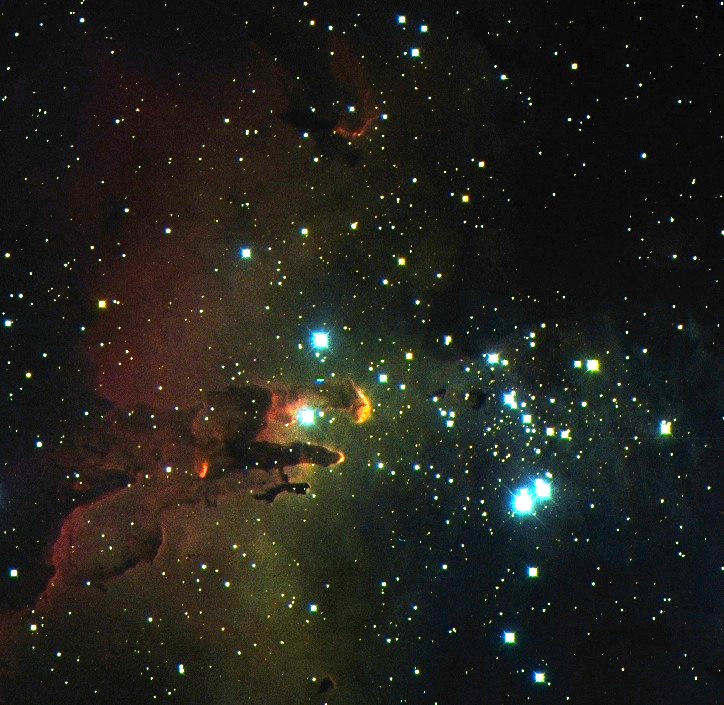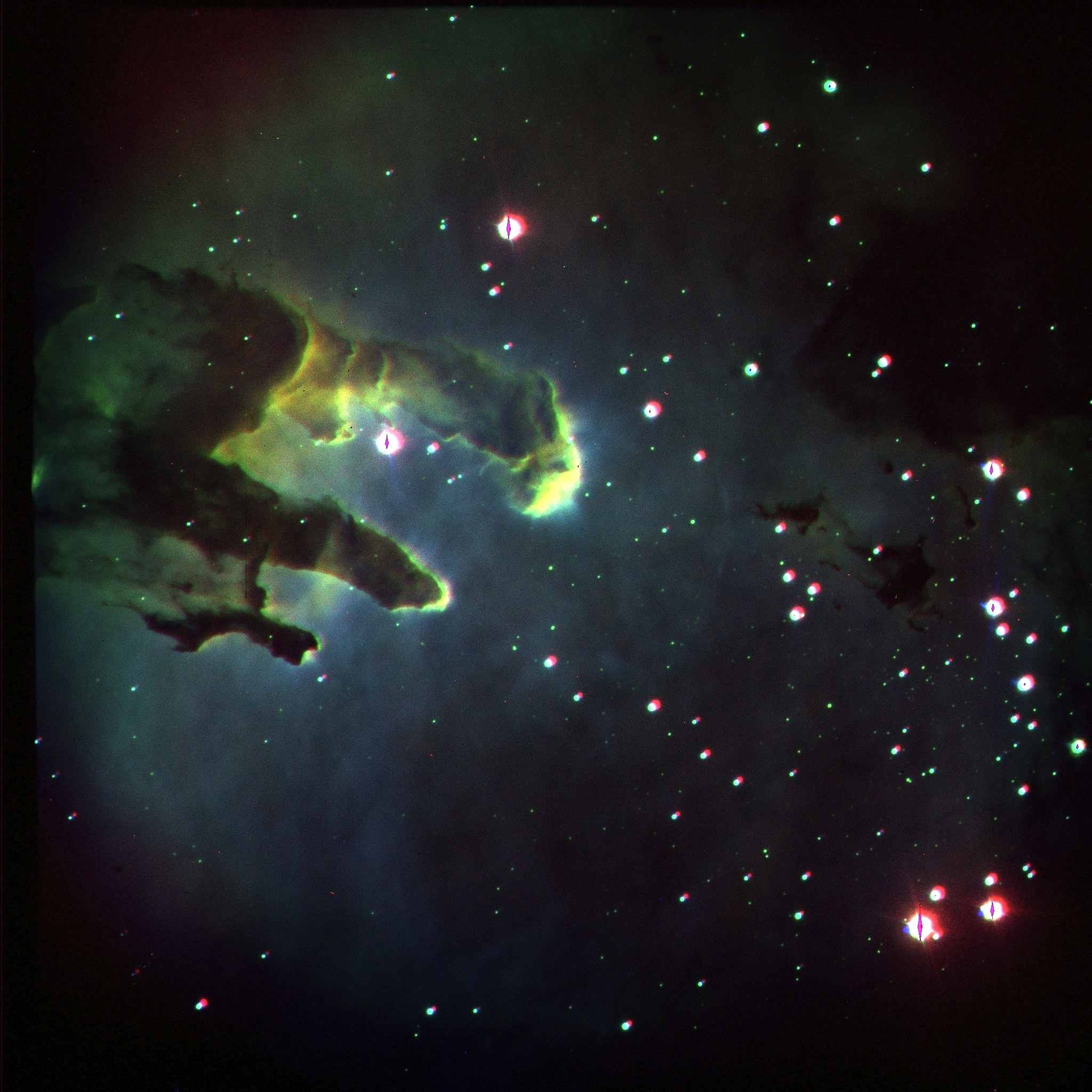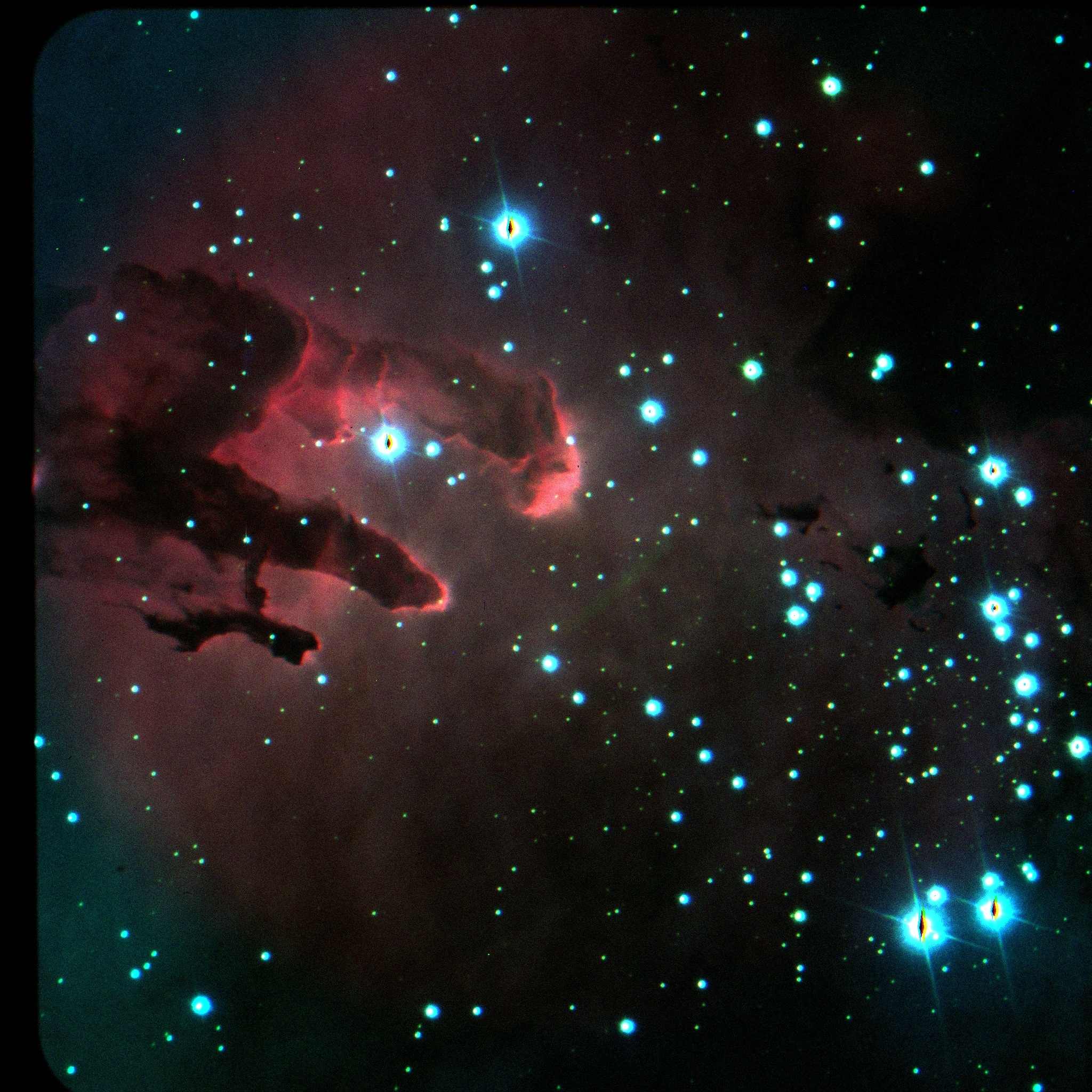The Eagle Nebula is an immense structure of pillars of gas and dust located some 7000 lightyears away toward the constellation Serpens.
It's a so-called "open cluster"; a site of new star formation. The pillars, several lightyears long, are concentrations of dense molecular gas, which are able to withstand the effects of the intense ultraviolet light emitted by newly-formed hot, massive stars, located above the nebula.
The knots and filaments on the surfaces of the pillars are formed as the surface of the pillars — heated by the hot stars — boils away.
I have observed the Eagle Nebula several times (because it's so beautiful) with different filters.
B, V, R
This image was take with a B, a V, and an R filter, letting through the blue, the green, and the red light. respectively.
The red spot in the eagle's butt is due to gas being heated and ionized from a jet coming from a protostar in the bottom of the image. This protostar is itself hidden in the dust, but is visible in infrared images.
Click here if you can't see the eagle.
O III, Hα, Hδ
In the second image I used an OIII, an Hα, and an Hδ filter, showing light from oxygen and hydrogen that is first ionized (i.e. have one of their electrons ripped off) by the strong UV radiation from nearby, hot stars and then recombines (with another electron).
The energy released by these processes result in light with wavelengths at 500 nm (cyan/green), 660 nm (pink), and 410 nm (violet), respectively.




